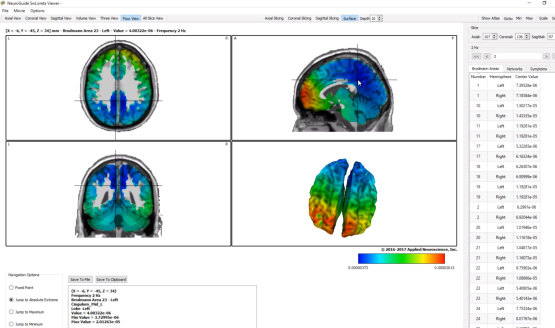Revealing the Mysteries of the Brain Through qEEG Cerebral Mapping in Psychological Wellness Assessment
Revealing the Mysteries of the Brain Through qEEG Cerebral Mapping in Psychological Wellness Assessment
Blog Article
Understanding the individual brain is a challenging endeavor, particularly when it pertains to psychological health. Traditional methods of assessment frequently depend on conversations and surveys, which can occasionally overlook important details about how the brain operates. This is where qEEG brainwave analysis, or qEEG, comes into play. qEEG is a specific method that assesses electrical activity in the cerebrum. By examining these brainwaves, mental health experts can obtain valuable insights into a person's psychological condition, helping to improve assessment and intervention.
qEEG works by applying small electrodes on the scalp to record neural signals. These sensors detect electrical impulses produced by nerve cells, the cells in the brain that interact with each other. The information gathered is then analyzed and displayed as a series of patterns. Each type of brainwave—such as α, β, delta, and theta—relates to different mental conditions and functions. For instance, alpha waves are commonly linked with relaxation, while β oscillations are linked to engaged cognition and problem-solving. By examining these trends, clinicians can identify irregularities that may indicate mental health concerns.
One of the significant benefits of qEEG is its capability to offer objective data. Unlike traditional evaluations that depend on personal reports from patients, qEEG offers a clear view of neural activity. This objectivity can help reduce biases in assessment and result to more precise treatment plans. For instance, if a patient is facing stress, qEEG can show particular trends of brain activity browse around here that are associated with anxiety disorders. This information allows mental health experts to customize treatments more efficiently, whether through therapy, medication, or other treatments.
Additionally, qEEG can be especially beneficial in tracking intervention progress. By conducting qEEG assessments at different points during therapy, healthcare providers can monitor variations in neural function over period. This continuous assessment assists ascertain if a intervention is working or if modifications are needed. For example, if a patient is not responding to a particular medication, qEEG may show that their brain activity has not changed in a way that indicates improvement. This feedback cycle can lead to more personalized and effective mental health care.
In conclusion, qEEG brain mapping is a powerful tool in the field of mental health assessment. By providing unbiased information about neural function, it improves the comprehension of different psychological health disorders. This method not only assists in precise assessment but also assists in tracking intervention success. As psychological health professionals continue to explore the potential of qEEG, it possesses promise for improving the lives of individuals facing psychological health issues. With continuous investigation and progress in techniques, the secrets of the mind may become clearer, leading to better outcomes for those in need of assistance.